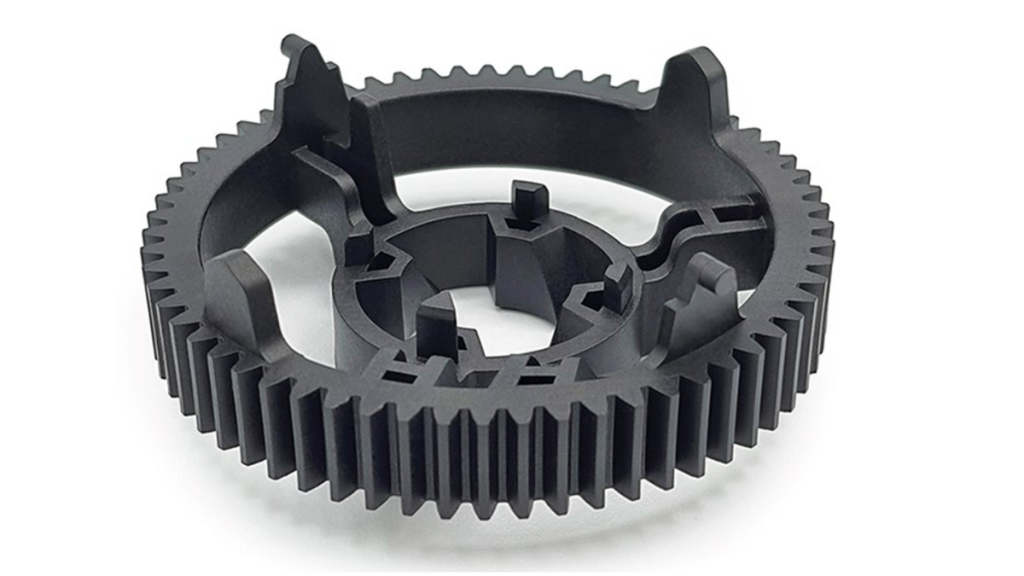As technology advances and manufacturing demands increase, industries require materials and processes that offer superior performance and reliability. Nylon injection molding has emerged as a vital manufacturing method, known for producing high-quality, durable components with excellent mechanical properties. From automotive parts to consumer electronics, nylon injection molded products are shaping the future of efficient, lightweight, and resilient designs. This article delves into the properties, benefits, applications, and critical technical considerations of nylon injection molding, providing a comprehensive understanding of this advanced manufacturing process.
Contact us today to discover advanced nylon plastic part manufacturer can elevate your product performance and accelerate your business growth. Let’s collaborate to create durable, precise, and innovative solutions that stand the test of time.
Introduction to Nylon Injection Molding
Nylon, or polyamide, is a versatile engineering plastic prized for its strength, toughness, and heat resistance. Its molecular structure features strong amide bonds, giving nylon remarkable durability while maintaining a lightweight profile. The two most commonly used types in injection molding are Nylon 6 (PA6) and Nylon 66 (PA66), each offering unique advantages.
Nylon 6 is produced through ring-opening polymerization of caprolactam, featuring excellent toughness and ease of processing, suitable for components requiring high flexibility and impact resistance. Nylon 66, synthesized from adipic acid and hexamethylenediamine, boasts a higher melting point and better thermal stability, ideal for demanding high-temperature applications.
The nylon injection molding process involves drying the raw nylon pellets to remove moisture, melting them under controlled heat, and injecting the molten material into precision molds. Upon cooling and solidification, the result is a dimensionally stable, high-performance plastic component capable of meeting complex design and production needs.
Advantages of Nylon Injection Molding
Exceptional Mechanical Strength and Lightweight Benefits
Compared to metals, nylon offers a favorable strength-to-weight ratio. Components produced through nylon injection molding deliver outstanding tensile strength, toughness, and wear resistance while reducing overall weight. This makes nylon parts highly desirable in industries aiming to improve energy efficiency without compromising durability.
Superior Heat and Chemical Resistance
Nylon 66 has a melting point around 260°C, enabling its use in high-temperature environments such as automotive engine compartments and electronic housings. Its excellent chemical resistance allows it to withstand exposure to oils, solvents, and various chemicals, ensuring long-term stability and reliability.
Cost Efficiency and High Production Rates
The nylon injection molding process is highly efficient, featuring short cycle times and minimal material waste. The ability to produce complex shapes without extensive secondary machining helps reduce overall production costs. This makes it an economical choice for large-volume manufacturing, ensuring consistent quality and timely delivery.
Design Flexibility for Complex Parts
Injection molding allows for the creation of intricate, detailed components that would be difficult or impossible to fabricate through other methods. Nylon’s excellent flow characteristics enhance mold filling, enabling designers to realize innovative and highly functional product geometries.
Applications of Nylon Injection Molding
The versatility of nylon injection molding has propelled its adoption across various sectors, where its material properties and manufacturing benefits address specific industry challenges.
Automotive Industry
In automotive manufacturing, nylon injection molded parts are used extensively for gears, bushings, connectors, and tubing within engine bays and other demanding environments. These parts endure mechanical stress, heat, and chemical exposure, while contributing to vehicle weight reduction and improved fuel economy.
Electronics and Electrical Equipment
The excellent electrical insulation and dimensional stability of nylon make it ideal for connectors, switches, cable ties, and other components in electronics. Nylon injection molded parts maintain performance even under thermal and chemical stresses, ensuring safety and durability.
Consumer Goods
From sports equipment to kitchen appliances, nylon injection molding produces durable, high-performance components that enhance user experience and product longevity. The process supports a wide range of aesthetic and functional design options, meeting diverse consumer demands.
Key Process Parameters in Nylon Injection Molding
Achieving top-quality nylon injection molded parts requires strict control over each stage of the manufacturing process.
Mold Design
A well-designed mold ensures uniform filling and proper venting, preventing common defects such as short shots and air traps. Designers must account for nylon’s shrinkage and moisture sensitivity by precisely calculating mold dimensions and cooling channels.
Material Preparation
Nylon’s hygroscopic nature means moisture absorption can cause bubbles, surface blemishes, and weakened mechanical properties. Pre-drying nylon resin at 80-90°C for 4-6 hours reduces moisture content below 0.2%, crucial for defect-free molding.
Injection Molding Parameters
- Barrel temperature: Typically 240-270°C for Nylon 6 and 280-300°C for Nylon 66, balanced to optimize melt flow and avoid degradation.
- Mold temperature: Maintained between 80-100°C to reduce warpage and residual stress.
- Injection speed and pressure: Adjusted to ensure complete mold filling and minimize defects.
- Packing and cooling time: Optimized for dimensional accuracy and part integrity.
Post-Molding Processes
After demolding, parts undergo dimensional inspection and surface quality checks. High-precision components may require secondary operations like coating or reinforcement to enhance performance.
Overcoming Common Challenges in Nylon Injection Molding
Moisture Management
Preventing moisture absorption is critical. Employing thorough drying protocols and airtight material handling prevents bubbles and surface imperfections.
Cycle Time Reduction
Improving mold cooling efficiency and fine-tuning injection parameters help shorten cycle times without sacrificing quality, maximizing throughput.
Minimizing Warpage and Deformation
Uniform mold temperatures, correct injection pressures, and strategic venting reduce internal stresses and warpage, producing stable and reliable parts.
Surface Finish Enhancement
Surface defects can be minimized by optimizing injection speed, mold surface treatment, and temperature control, delivering smooth and visually appealing products.
Why Choose Us for Your Nylon Injection Molding Needs?
Partnering with experienced professionals in nylon injection molding guarantees superior product quality and process efficiency. Our expertise covers material sourcing, mold design, process optimization, and stringent quality control, ensuring every part meets exacting standards.
We provide tailored solutions to address your unique manufacturing challenges, assisting from initial design to final production. Our commitment to excellence makes us your reliable partner for high-quality nylon injection molded components.
